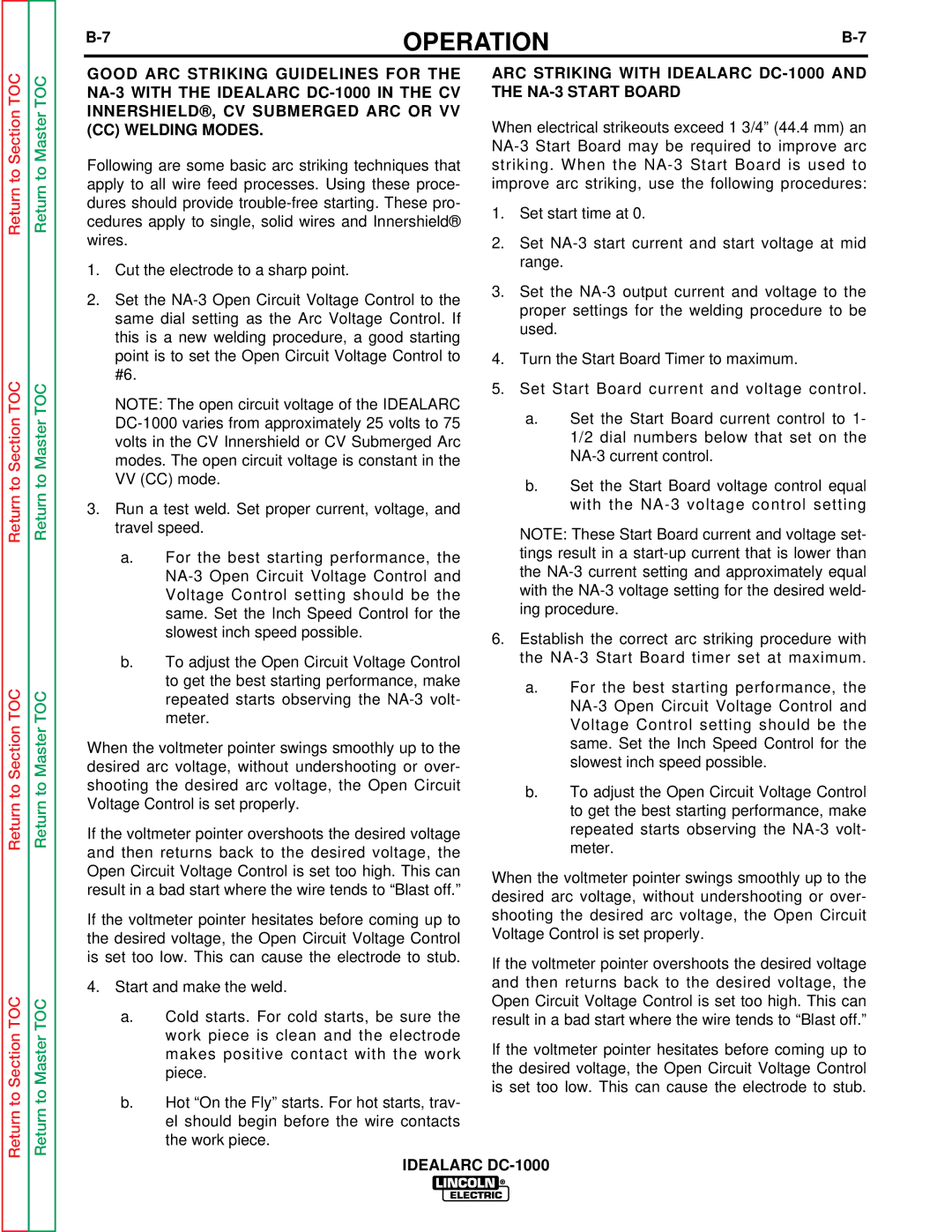
OPERATION | ||
|
|
Return to Section TOC
Return to Section TOC
Return to Section TOC
Return to Section TOC
Return to Master TOC
Return to Master TOC
Return to Master TOC
Return to Master TOC
GOOD ARC STRIKING GUIDELINES FOR THE
Following are some basic arc striking techniques that apply to all wire feed processes. Using these proce- dures should provide
1.Cut the electrode to a sharp point.
2.Set the
NOTE: The open circuit voltage of the IDEALARC
3.Run a test weld. Set proper current, voltage, and travel speed.
a.For the best starting performance, the
b.To adjust the Open Circuit Voltage Control to get the best starting performance, make repeated starts observing the
When the voltmeter pointer swings smoothly up to the desired arc voltage, without undershooting or over- shooting the desired arc voltage, the Open Circuit Voltage Control is set properly.
If the voltmeter pointer overshoots the desired voltage and then returns back to the desired voltage, the Open Circuit Voltage Control is set too high. This can result in a bad start where the wire tends to “Blast off.”
If the voltmeter pointer hesitates before coming up to the desired voltage, the Open Circuit Voltage Control is set too low. This can cause the electrode to stub.
4.Start and make the weld.
a.Cold starts. For cold starts, be sure the work piece is clean and the electrode makes positive contact with the work piece.
b.Hot “On the Fly” starts. For hot starts, trav- el should begin before the wire contacts the work piece.
ARC STRIKING WITH IDEALARC DC-1000 AND THE NA-3 START BOARD
When electrical strikeouts exceed 1 3/4” (44.4 mm) an
1.Set start time at 0.
2.Set
3.Set the
4.Turn the Start Board Timer to maximum.
5.Set Start Board current and voltage control.
a.Set the Start Board current control to 1- 1/2 dial numbers below that set on the
b.Set the Start Board voltage control equal with the
NOTE: These Start Board current and voltage set- tings result in a
6.Establish the correct arc striking procedure with the
a.For the best starting performance, the
b.To adjust the Open Circuit Voltage Control to get the best starting performance, make repeated starts observing the
When the voltmeter pointer swings smoothly up to the desired arc voltage, without undershooting or over- shooting the desired arc voltage, the Open Circuit Voltage Control is set properly.
If the voltmeter pointer overshoots the desired voltage and then returns back to the desired voltage, the Open Circuit Voltage Control is set too high. This can result in a bad start where the wire tends to “Blast off.”
If the voltmeter pointer hesitates before coming up to the desired voltage, the Open Circuit Voltage Control is set too low. This can cause the electrode to stub.
